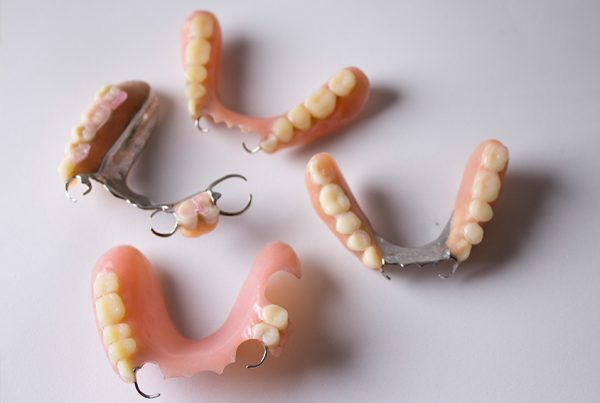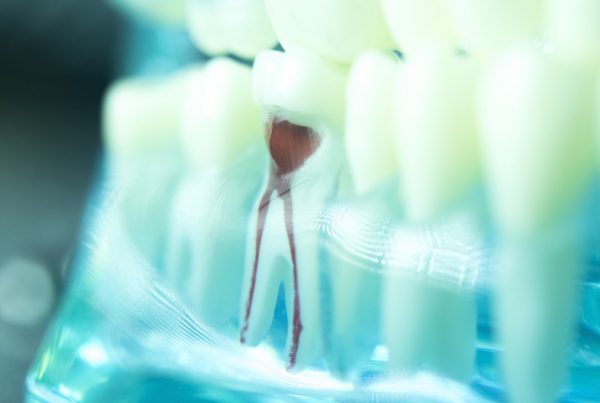So what is a root canal filling? Within a tooth is a canal or several canals where the nerve lives. If the tooth’s nerve is damaged or dead, this canal must be cleaned and filled to remove any dead tissue or bacteria.
Root canal filling (also known as root canal treatment) is when a dentist finds where the canal or canals in the tooth are, cleans them out and then fills them. The canals are filled with a rubbery material that bends and flows to allow curved or awkward shaped canals to be filled.
As you all wince, it’s probably time that I dispel the myths about root canal treatment. Root canals are not hideously painful as a huge proportion of the public believe. It is true that if the nerve in a tooth is inflamed and angry, it may be tricky to get completely numb and dressing the tooth to sooth it may be sensitive. However, after an initial dressing to calm the tooth, any further appointments should be pain free.
If the tooth is already dead by the time that you have the root canal, you are not going to feel a thing. I regularly have patients fall asleep during root canal treatment because it is completely comfortable.
The tricky bit tends to be finding the canals in the first place. Front teeth will normally have just one canal. Back teeth can have three or four. Everyone varies.
To isolate the tooth, your dentist may use a ‘rubber dam’. This is a rubber sheet that goes over the tooth. This dam does a couple of things. It keeps you safe from your dentist dropping anything into your mouth. It also prevents any bacteria from your mouth getting into you tooth.
The idea with root canal treatment is that you want to get rid of as many bugs inside the tooth as you can. We want to eliminate that little harbour of bacteria within the tooth to keep the roots and foundations of your tooth healthy.
Benefits and Risks
The benefit of root canal treatment is that you get to keep the tooth.
The downside and biggest risk is that it won’t always work. The canals in teeth can be straight, bent or curved. They can have cheeky, little canals shooting off from the main ones. All of these extra or awkward spaces are places for bacteria to hid while the dentist is trying to clean. For this reason, it may not be possible for your dentist to always get rid of enough of the the bacteria. If there are lots of bacteria left over, the chances of success are much less.
It is important to know before you start that things can go wrong with root canal treatment. The main risk of root canal is what I mentioned above; it may not work and you may ultimately still lose the tooth. It is possible that while cleaning the canals, part of the cleaning instrument can break and get stuck in the canal. If this happens, the instrument may be left there if it cannot be retrieved. This isn’t always the end of the world and the root canal treatment may still be a success but the treatment is more likely to fail.
If a canal is a really funny shape or too small, it may not be possible to get all the way down the canal. If this happens, there may be bugs left at the end of the tooth and again, the treatment is more likely to fail.
The final risk I will mention is that it may not be possible to find the canal within the tooth. As teeth get older, the nerve likes to wall itself off, slowly retreating out of the tooth. It wants an easier life so wants to be further away from any thing that can annoy it. My girlfriend knows the feeling so I appreciate why the nerve does this. The result of this is that the canal in the tooth may be almost completely closed off and not possible to clean out.
Despite all of the possible risks, root canal treatment is often the only way to save a tooth. The idea is to remove any bacteria from the tooth and then seal it up so that they cannot get back in. If this is successful, the tooth can last a really long time.
Something to bare in mind is that after a root canal treatment, particularly on a back tooth, the tooth will be weakened because of everything it has been through. Because it is weakened, it is more prone to fracture. To prevent this, something like a crown may be necessary to cover the tooth, protect it and keep it strong and functional. There is no point in going through all the time and expense of a root canal treatment if you then leave the tooth without a protective covering and it fractures.
Often with front teeth, if there is enough tooth structure left, you can avoid a crown. Front teeth take smaller loads and fracture much less often. Back teeth, which take huge pressures when you bite and chew, almost always require something like a crown.
Keep updated with the Online Dentist newslettersign up today
Recent Articles
 A denture is a false tooth or teeth on a plate. They are not fixed in place and can be taken in and out. They are generally the easiest way...
A denture is a false tooth or teeth on a plate. They are not fixed in place and can be taken in and out. They are generally the easiest way...
 Gum disease is when bacteria have got underneath your gums and are damaging the supporting tissues of your teeth. If you get rid of the bacteria, you’ll stop the damage....
Gum disease is when bacteria have got underneath your gums and are damaging the supporting tissues of your teeth. If you get rid of the bacteria, you’ll stop the damage....




